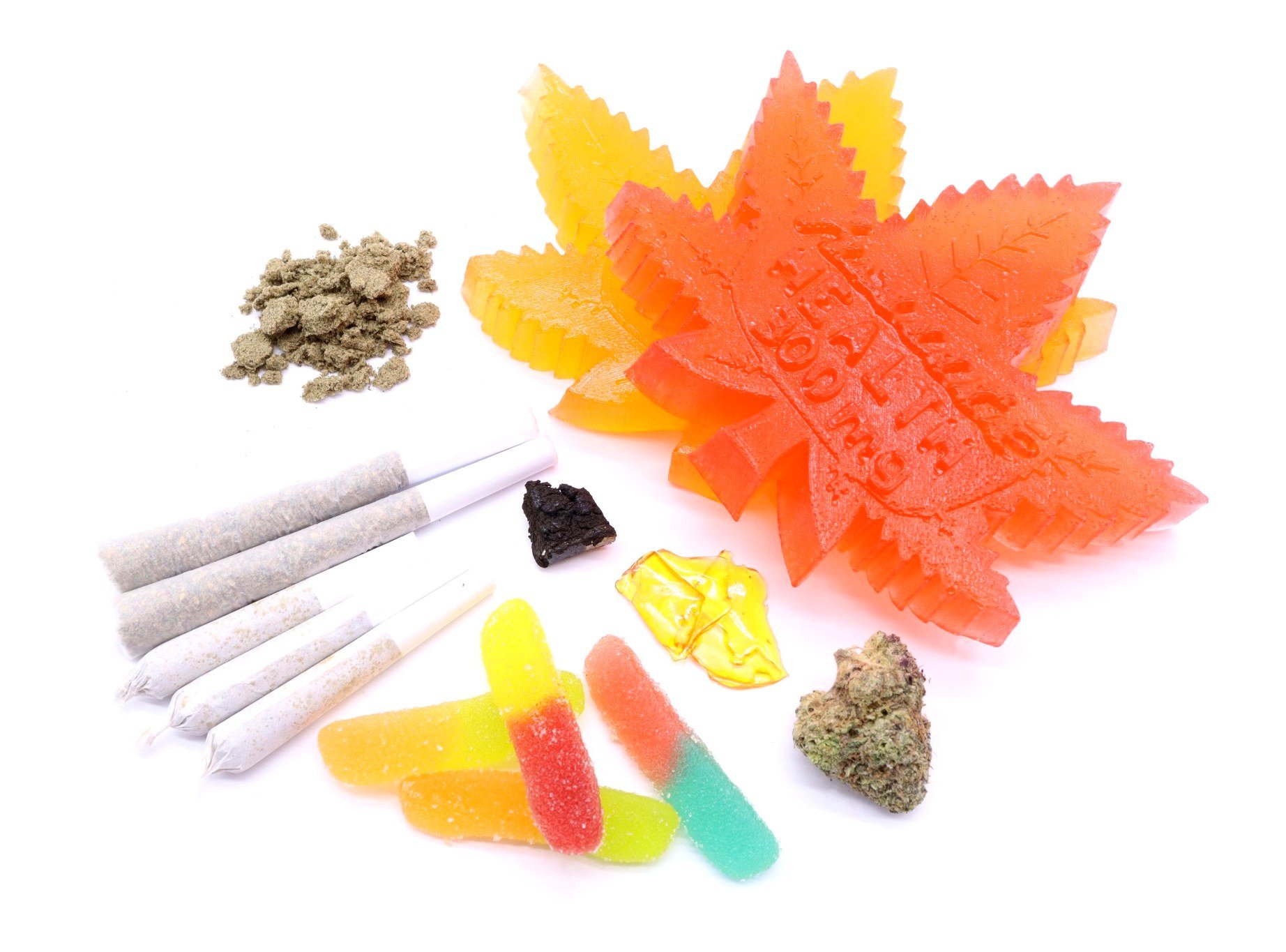Psychedelic Properties of Weed
To understand if weed (cannabis) falls under the category of psychedelics, it’s essential first to grasp what defines a psychedelic substance. Psychedelics are a class of psychoactive substances that typically trigger altered states of consciousness, perceptual anomalies, and enhanced spiritual experiences. Classic psychedelics include substances like LSD, psilocybin (found in magic mushrooms), and mescaline.
Cannabis, on the other hand, contains various compounds known as cannabinoids, with THC (tetrahydrocannabinol) being the most prevalent psychoactive component. THC is primarily responsible for the “high” that users experience. This high can involve changes in mood, perception, and cognition, leading some users to categorize their experiences as psychedelic-like.
Although cannabis does not fit perfectly into the classic psychedelic category, its effects can share similarities. For instance, higher doses of THC can lead to altered perception of time and space, vivid visual or auditory experiences, and introspection, traits commonly associated with psychedelics. This haze of altered reality, particularly at high concentrations or potency levels, can evoke experiences that are reminiscent of light psychedelic trips, though typically less intense than those caused by LSD or psilocybin. Additionally, the cultural context and set and setting of cannabis use can also influence how “psychedelic” the experience feels.
Comparing Cannabis to Classic Psychedelics
When comparing cannabis to classic psychedelics like LSD or psilocybin, several key differences emerge. Classic psychedelics often lead to profound, transformative experiences lasting several hours. They can elicit intense visual hallucinations, a strong sense of ego dissolution, and deep spiritual or mystical experiences. In contrast, while cannabis can enhance sensory perception and create feelings of euphoria or relaxation, it rarely produces the same level of deep, immersive experiences associated with classic psychedelics.
However, the subjective nature of psychedelic experiences means that for some users, especially those using high-potency strains or consuming cannabis in edibles, the boundaries between a cannabis high and a psychedelic experience can blur. Cannabis is sometimes used as a “soft” psychedelic, offering a mild and controllable alternative for those seeking to explore altered states without the commitment required for more potent substances.
Cannabis also differs from classic psychedelics in its mechanism of action and the brain receptors it influences. While psychedelics like LSD primarily act on serotonin receptors (specifically the 5-HT2A receptor), THC primarily interacts with the endocannabinoid system, affecting cannabinoid receptors such as CB1 and CB2. This differing mechanism significantly contributes to the distinct effects observed with cannabis compared to classical psychedelics.
The Role of Terpenes and Other Cannabinoids
Cannabis differs from traditional psychedelics in several ways. It contains terpenes and various cannabinoids. These can alter the overall experience. Compounds like CBD (cannabidiol) affect THC’s psychoactive effects. CBD often reduces anxiety or paranoia caused by high THC doses. Terpenes also impact mood and perception. They can enhance taste or aroma, affecting how users perceive their surroundings.
Terpenes: The Fragrance and Flavor Enhancers
Terpenes are aromatic compounds found in many plants, including cannabis. They not only give cannabis its distinctive scent and flavor but also play a significant role in its effects. For instance, terpenes like limonene are thought to elevate mood and provide stress relief, while others like myrcene might have a sedative effect. These terpenes interact with cannabinoids and the body’s endocannabinoid system in complex ways, altering the overall experience and potentially contributing to the psychoactive effects.
The Entourage Effect
The interplay between different cannabinoids and terpenes is often referred to as the “entourage effect.” This phenomenon suggests that the combinations of these compounds work synergistically to produce a unique set of effects that wouldn’t be possible if each component were isolated. This is part of what makes each strain of cannabis distinct and why two strains with similar levels of THC can lead to notably different experiences.
The Role of Set and Setting
The concept of set and setting is crucial when using psychedelics like cannabis. It involves one’s mindset and the physical and social environment. This idea, first linked to substances like LSD, shows how greatly these factors affect experiences. Set refers to an individual’s mental state, while setting refers to their surroundings. Together, they influence the outcome of psychedelic use.
For cannabis users, set and setting are key. They can decide if the experience is relaxing or more introspective. For example, using cannabis in a calm setting with soothing music and good company can lead to joy and contentment. Conversely, a chaotic or stressful setting might increase anxiety or paranoia. Therefore, both the intention behind using cannabis and the surrounding environment are essential. They determine whether the experience feels similar to a psychedelic one.
Varieties of Cannabis and Their Effects
The strain and method of consumption significantly influence the cannabis experience. Indica strains are typically associated with relaxing, body-centered effects, while sativa strains are thought to produce more uplifting, cerebral effects. Hybrid strains can offer a balanced mix of these influences. High-THC strains or those rich in other cannabinoids like CBD can lead to varying subjective effects that might either mimic or steer away from a psychedelic experience.
The method of consumption, such as smoking, vaping, or using edibles, also alters the experience. Edibles tend to produce a stronger and longer-lasting effect due to the way THC is metabolized in the body, potentially leading closer to a psychedelic-like encounter compared to inhalation methods.
Potential Therapeutic Benefits
Cannabis, much like traditional psychedelics, holds considerable potential in therapeutic settings due to its psychoactive properties. These benefits span a range of psychological and physiological areas, underlining cannabis’s role in not just recreation but also health and wellness.
Mental Health Treatment
Cannabis has shown promise in managing symptoms of anxiety and depression. The calming effects of certain cannabinoids can lead to mood stabilization and reduced stress levels. For some, the introspective journey cannabis induces can help process emotions and thoughts, somewhat akin to the therapeutic uses of psychedelics like psilocybin or LSD in psychotherapy.
Additionally, cannabis may assist those dealing with PTSD by providing a form of relief from hypervigilance and anxiety symptoms. The compound CBD, often found in popular cannabis strains, is reputed for its anxiolytic properties, offering potential as a therapeutic tool when combined with THC.
Pain Management
One of the key therapeutic uses of cannabis is in pain management. The analgesic properties of cannabis are well-documented, providing relief for chronic pain sufferers without the harsh side effects associated with conventional painkillers. This makes it a critical tool for individuals with conditions like arthritis, migraines, or fibromyalgia. The presence of therapies combining psychedelic-like cannabinoids with traditional medicine can lead to enhanced pain relief and improved quality of life.
Neuropathic Pain Relief
Cannabis is often utilized to alleviate neuropathic pain, a challenging condition that is sometimes resistant to standard treatments. Cannabinoids interact with the endocannabinoid system and modulate pain signals, providing an alternative for patients who struggle with nerve pain. The synergy between cannabinoids, particularly when isolated in certain strains designed for pain relief, provides a viable option where others may have failed.
Reduction of Inflammation
Beyond just pain relief, cannabis has anti-inflammatory properties that are beneficial for reducing the underlying inflammation associated with various chronic pain conditions. This is particularly significant for individuals with autoimmune disorders such as rheumatoid arthritis and conditions like irritable bowel syndrome. The reduction of inflammation not only decreases pain but also aids in managing other symptoms and improving overall health outcomes.
Importance of Mindset (Set)
A person’s mindset includes their mood, expectations, and psychological state. These factors can shape the effects of cannabis. If someone uses cannabis while anxious or stressed, they may feel paranoia or intensified negative emotions. On the other hand, approaching cannabis use with curiosity or openness can lead to a positive or enlightening experience. Mindfulness and intention are often emphasized to enhance the likelihood of a beneficial experience when using any psychoactive substance.
Practicing mindfulness involves being fully present and engaged with the current moment without judgment. This can help individuals be more aware of their own emotions and physical responses when consuming cannabis, allowing for a more controlled and insightful experience. Setting intentions before use can also be beneficial, as it can guide the focus of the experience, whether it’s relaxation, creative exploration, or alleviating pain.
Intention setting can involve simple goals such as deciding to meditate, journal, or engage in creative activities while under the influence of cannabis. This proactive approach can ensure that the experience remains constructive and aligns with personal goals. Additionally, understanding one’s own tolerance levels and selecting the right strain can significantly impact the overall effect, complementing the importance of mindset.
Mindset is also shaped by the social and physical environment, or “setting,” emphasizing the need for a comfortable and safe space. Consuming cannabis in a familiar setting with supportive people can reduce anxiety and enhance the overall experience. Sharing the experience with others who are respectful and understanding of cannabis use can foster a sense of community and shared insight.
Influence of Environment (Setting)
The environment in which cannabis is consumed—the setting—plays an equally essential role. A comfortable, safe, and supportive atmosphere can foster a more enjoyable and potentially introspective experience, while a chaotic or unfamiliar setting may heighten feelings of unease or anxiety. For instance, using cannabis in a quiet, familiar space with trusted friends may encourage relaxation and open dialogue, whereas using it in a crowded or unpredictable environment might lead to frantic behaviors or experiences.
The influence of setting extends beyond just the physical surroundings; it also encompasses the emotional and social atmosphere. When individuals are in a space where they feel emotionally secure and free from judgment, it can significantly enhance the cannabis experience. This nurturing environment allows users to explore their thoughts and emotions without fear, facilitating a deeper connection with themselves and others.
Social dynamics also play a crucial role. Being with friends or peers who share an understanding and acceptance of cannabis use can amplify positive experiences. These shared experiences often lead to communal bonding, where group meditation, conversation, and laughter become valuable parts of the journey. Celebrating these moments together can create lasting memories and reinforce social bonds.
Psychedelic Plants For Psychedelic People
The sensory aspects of weed as a psychedelic can impact the experience, in subtle and spectacular ways. Soft lighting, calming music, and pleasant scents, such as incense or essential oils, can contribute to an ambiance that supports relaxation and introspection. These elements help create a multisensory experience that complements the effects of cannabis, often leading to heightened awareness and enjoyment of the present moment.
Additionally, integrating elements of nature into the setting can further enhance the cannabis experience. Indoors or outdoors, plants and natural sounds like flowing water or birdsong enhance our connection to nature. Fresh air boosts this sense of peace. This connection grounds us and aligns us with the natural world. It enhances the calming effects of cannabis, promoting a contemplative state of mind.
In outdoor settings, open spaces offer freedom and expansiveness. They lead to moments of awe and wonder. For instance, using cannabis in a natural landscape—like a garden, beach, or near mountains—offers a powerful backdrop for reflection and inspiration. Nature’s beauty and grandeur remind us of the larger universe, sparking creative thoughts and a sense of unity with the environment.
Furthermore, incorporating personal rituals into the setting can enhance the cannabis experience. Rituals, such as setting intentions before consumption, practicing mindfulness, or engaging in creative activities, can add structure and meaning to the experience. These practices not only enrich the interaction with cannabis but also provide opportunities for personal growth and self-discovery.


